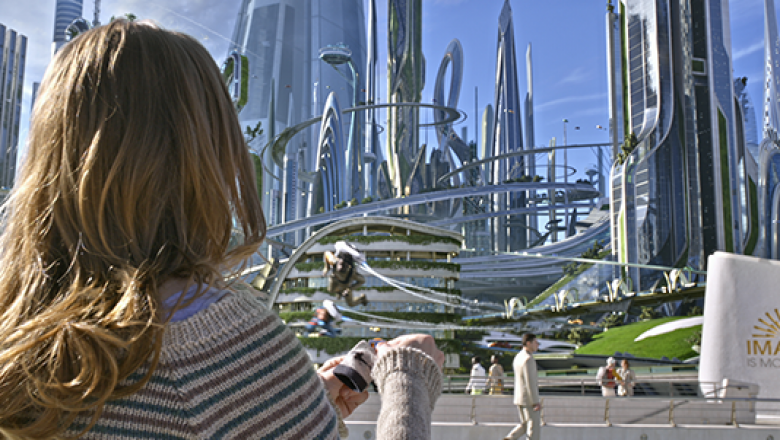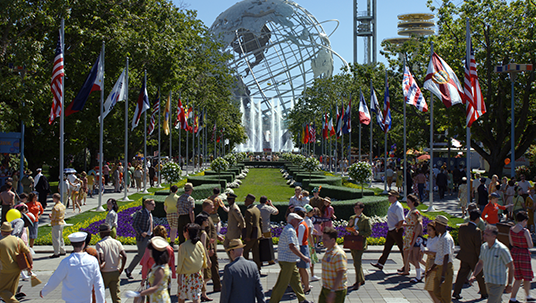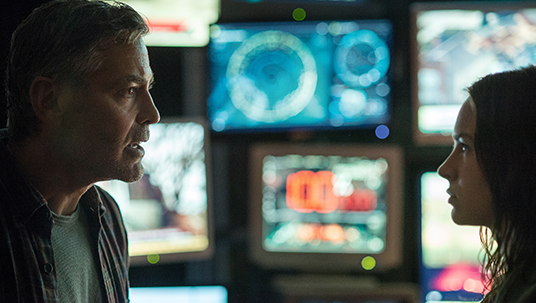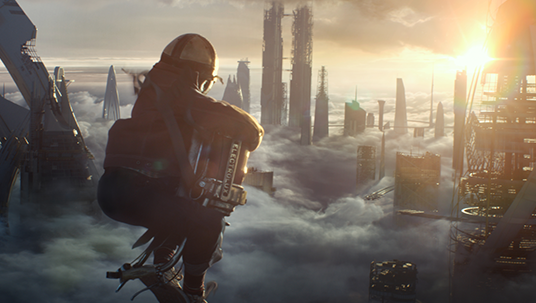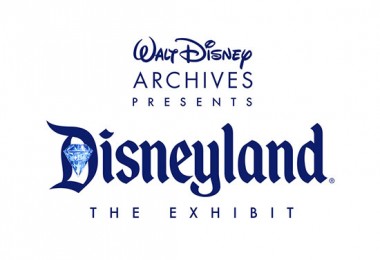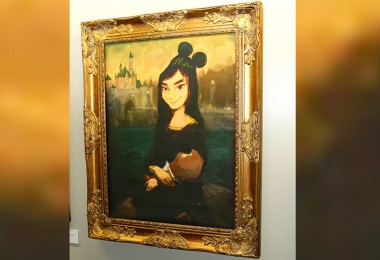Tomorrowland, the highly anticipated new film from director Brad Bird (The Incredibles, Mission: Impossible—Ghost Protocol) rockets into theaters this Friday—and like any good mystery adventure, it’s keeping a lot of its most amazing secrets close to the vest. But here’s what we do know: A whip-smart teenager named Casey Newton (Britt Robertson) comes into possession of an unusual pin. Just by touching the pin, she’s transported to somewhere strange. Futuristic. Unlike anything she’s ever seen before, and filled with some of the best and brightest minds of the 20th (and 21st) century. As she tries to uncover the pin’s origin, she meets Frank Walker (Oscar® winner George Clooney), a former “boy-genius” who’s grown into an ornery, farm-bound recluse. Together, whether they like it or not, they embark on a dangerous mission—one that just may change the world as we know it.
On July 17, 1955, Walt Disney dedicated his newest themed land, Tomorrowland, at Disneyland.
It was golden time, when Walt—and most Americans, in fact—couldn’t help but imagine an optimistic future. But the public’s view of years-to-come seemed to shift somewhere in the 1970s, and it was this “darker” turn that intrigued the film’s co-writer and producer Damon Lindelof (Lost). As he started to formulate the story of Tomorrowland, he heard about a mysterious box found deep in the corridors of Walt Disney Imagineering. Initially labeled That Darn Cat (after the 1965 Disney film), that title was crossed out—and in its place was written “1952.” The box was a treasure trove of curiosities: futuristic models and blueprints, photographs, letters and all kinds of memorabilia related to both the development of Tomorrowland at the Park and the 1964–65 New York World’s Fair.
“I began to imagine that the contents of the box were a guide to a secret story that nobody knew,” Damon says.
“But if so, what would that story be? And the most obvious answer to me was that there really was a place called Tomorrowland that was not a theme park, but existed somewhere in the real world.” And you’re not mistaken: There are parallels between the world of Tomorrowland and one of Walt’s last projects—EPCOT, the “Experimental Prototype Community of Tomorrow.” “Walt Disney was really interested in the future,” Damon explains, “and all the possibility it could bring. It completely and totally fired up his creative imagination.”
Early in the process, both Brad and Damon (the pair penned the script from a story idea developed with executive producer Jeff Jensen) always imagined George Clooney in the role of cynical scientist Frank Walker—and wrote with him in mind. “From very early on we described Frank as ‘George Clooney-esque,'” Damon explains. “We crossed our fingers and did our best job of writing it, infusing Frank with a curmudgeonly humor and a heroic quality—all of which we think George embodies. And then we sent it off into the universe.” Thankfully, the in-demand actor saw something unique and signed on, calling Frank “a disenchanted grump who was a bit of a dreamer as a young boy.” Britt Robertson (Under the Dome) plays Casey Newton, a teenager with a love of science who still sees the world through optimistic eyes. “Casey has this drive to do big things and change the world,” Britt says, “and she wants the world to be a place that’s full of hope and inspiration, but she doesn’t know how to make it so.” Could Tomorrowland offer the kind of promise she’s been searching for?
Filmed literally all over the world—at locations that included Spain (at the space-age City of Arts and Sciences culture complex in Valencia), Canada, Cape Canaveral in Florida and the it’s a small world attraction right inside Disneyland—Tomorrowland promises to be a quintessential Disney film, full of inventive storytelling and state-of-the-art special effects.
Brad can’t wait for audiences to finally see the finished product: “The interesting thing about Tomorrowland is that it’s an intriguing idea, and it’s connected with Disney in a really interesting way,” he explains. “We’re getting a large canvas to paint on, because the very word ‘Tomorrowland’ is evocative; it evokes play, and it evokes promise.”


